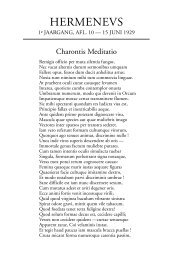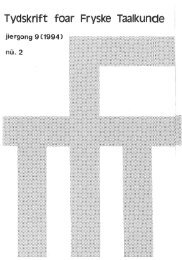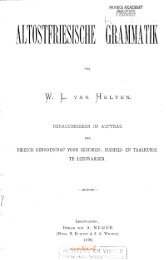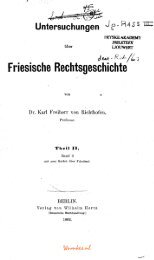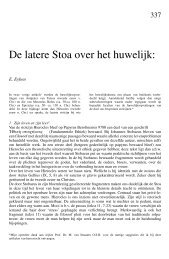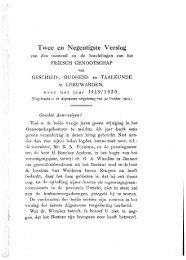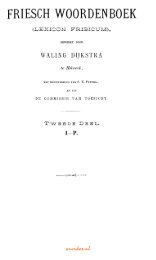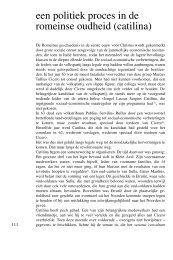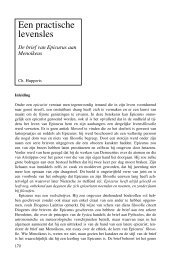It wurk fan Gysbert Japix n-2 - Tresoar
It wurk fan Gysbert Japix n-2 - Tresoar
It wurk fan Gysbert Japix n-2 - Tresoar
Create successful ePaper yourself
Turn your PDF publications into a flip-book with our unique Google optimized e-Paper software.
Cats, Camphuysen, Vondel and Huygens. Ancient poets such as Virgil, Horace and<br />
especially Ovid supply additional material. More than once Du Bartas/Heijns function<br />
as a source of matter.<br />
The imitations can be distinguished into borrowing (complete and slavish similarity<br />
between model and copy), imitatio (Variation, especially through transformation<br />
of place, time and subject; usually (or always?) on the basis of more than one model)<br />
and aemulatio (improvement of model(s)). To the category of borrowing belong in<br />
most cases the short elements such as Scriprural passages, topoi and Standard motifs.<br />
They often occur within the larger whole of imitations of complete texts or longer<br />
portions fhere of. Their function then seems to be to diversify the matter and to embellish<br />
it. Together with the combination of longer portions of text or of complete<br />
texts they bring about in the imitatio the characteristic dissimulatio or contamination.<br />
Dissimulation in the sense of concealing the model does not seem to have a special<br />
significance in GJ's work. The models remain clearly recognizable and are not at all<br />
obscure. Aemulatio for GJ is a matter of style. I have not found any instances of models,<br />
although, as a matter of course, there are differences as to content.<br />
Character and development of GJ; work (7.2)<br />
Looking for a common denominator with which to sum up the characteristics I<br />
have detected in GJ's work as a whole, I come up with the word 'craftsmanship'.<br />
Throughout his oeuvre there is indeed present ingenious inventio (and also elocutio),<br />
but no personal or other concrete, topical information can be found, not even in the<br />
dialogues and the Friesche Herder, however intense they may be in their Christian inspiration.<br />
After all, by far the larger part of his work consists of translations (of prose<br />
texts), versifications (of psalms) and adaptations (such as after Roemer Visscher in<br />
the love poems). In it one is Struck by the ingenuity with which the liveliness of the<br />
Originals is enlarged by technical means such as visualization, dialogization and alliteration.<br />
The (rare) Bolsward elements in Friesche Tjerne and Sjolle Kreamer, which<br />
scarcely reoccur in his other works, would seem to be an exception if explaining<br />
them as conventional adaptations to local circumstances would not be more likely.<br />
Likewise characteristic of the decidedly literary nature of the work are the allegorizing,<br />
personifying and pastoralizing features in the texts, as well as the literary impulse<br />
which often explains the genesis of a text. GJ himself mentions the honour of<br />
the Frisian language as the motivation for his poetic activities, and perhaps his main<br />
aim was indeed language construction and language expression.<br />
His concern for form might also explain the originality present in the design of his<br />
work. For instance, there are no known models of the dialogues in the second part of<br />
the FR which appear to owe their form to an internal development in GJ's poetic career.<br />
Nor have I been able to find models of the concluding last line, which, as an extra<br />
conclusion, falls outside the rhyme scheme and (possible) stanzaic order. A clear<br />
example of artful design, in which he went further than others, are the ladder patterns<br />
in two dialogue songs.<br />
There is one characteristic, however, which I cannot classify as craftsmanship, at<br />
least not in the meaning of technical skill as it is used here: his humour. <strong>It</strong> is revealed<br />
in many texts, especially in his love poems, as if love poetry were especially suited for<br />
the poet (and seventeenth Century authors in general?) to demonstrate wit.<br />
518<br />
wumkes.nl





